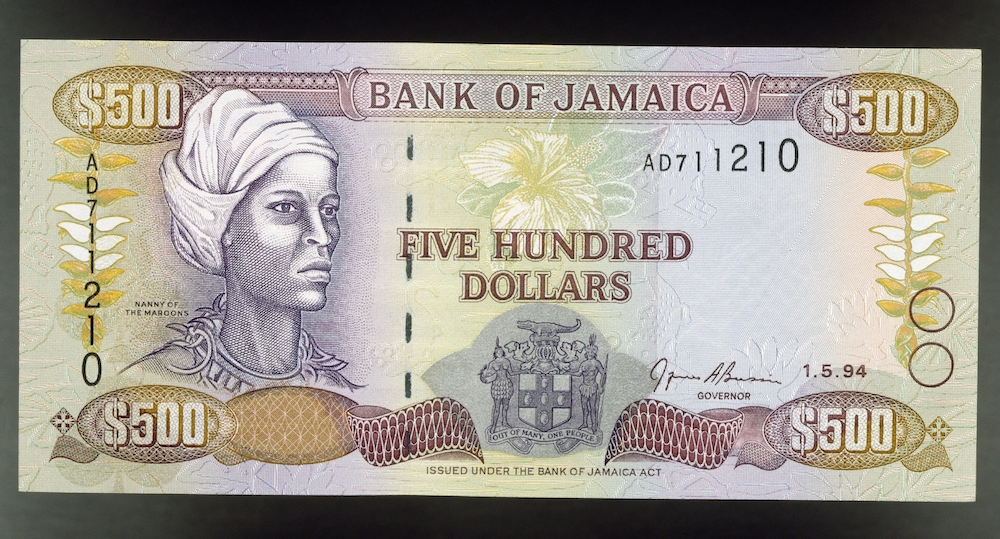Lessons From Mars—and Jamaica—on Sovereignty

On February 15, in the darkness and silence of outer space, 60 satellites were deployed as part of billionaire Elon Musk’s Starlink internet constellation. This launch was one of many that had already been undertaken by Starlink—a subsidiary of Musk’s aeronautical company SpaceX—to place small satellites in low Earth orbit. SpaceX opened up pre-orders to Starlink that month; by June, according to the company, the number of users had grown to nearly 100,000, with over 500,000 pre-orders. Pending regulatory approval, Starlink is set to launch as a global broadband provider this fall.
Musk has promoted Starlink as a project to democratize access by making lightning-speed internet available to anyone, especially those living in remote and isolated places. Ultimately, though, Musk does not envision the Starlink constellation as merely an earthly project. He wants to enable high bandwidth communication between Earth and Mars in service of his future efforts to colonize the Red Planet and make human civilization interplanetary.
Starlink has not been without criticism. Some have suggested that the project’s web of satellites will ruin stargazing. Others have lambasted the project’s cost (US$99 per month and a one-time equipment fee of US$499) as unrealistic for those who would most benefit from the service.
Still, the most worrying aspect of Musk’s latest foray is a bit more hidden: Shrouded in legalese in a seemingly mundane clause of Starlink’s customer Pre-Order Agreement is a reference to SpaceX’s future intention to colonize Mars.
Clause 10 of the agreement declares:
“For Services provided on Mars, or in transit to Mars via Starship or other spacecraft, the parties recognize Mars as a free planet and that no Earth-based government has authority or sovereignty over Martian activities. Accordingly, Disputes will be settled through self-governing principles, established in good faith, at the time of Martian settlement.”
In positioning Mars as outside the jurisdiction of any earthly government and as subject to SpaceX’s own self-governing principles, Clause 10 boldly calls into question the notion of Martian sovereignty.
Starlink’s Clause 10 raises important legal and political questions about the governance of a celestial body in outer space. In addition, for me—an Afro-Jamaican anthropologist who studies how legacies of colonization impinge on everyday life in Jamaica—the debate about Martian sovereignty also brings to mind contentious histories on Earth. It reminds me of struggles over self-determination and disenfranchisement that have played out and continue to play out in the Caribbean and elsewhere.
As we bear witness to the flurry of excitement surrounding Starlink’s imminent launch and SpaceX’s steady progression toward Martian colonization, we must pause to scrutinize today’s private space exploration corporations. In no uncertain terms, these corporations are at risk of effectively continuing Earth’s most violent colonial legacies by replicating them in outer space. Grappling with this truth requires turning our starry-eyed gaze back to this planet.
That is why this story, which starts with Musk, must now take a sharp left turn—toward Richard Currie, another charismatic figure asserting his own sovereignty claims. Currie was recently elected colonel of Jamaica’s Sovereign State of Accompong, home to the Maroons, a community of descendants of escaped enslaved African people. Accompong is steeped in rich, complex Black emancipatory histories: During colonial rule, the Maroons established free and fortified strongholds in Jamaica’s mountainous Cockpit Country and elsewhere on the island from as early as the 17th century.
Jamaican Maroon country and Mars may seem light years apart—and the preoccupations of the descendants of Black freedom seekers and Musk even more distant.
And yet, taken side by side, they highlight how claims of sovereignty are often intricately intertwined with claims about liberation and concerns about imperialism. From where I stand, I see clearly that the past and present story of Jamaica’s Maroons and the future possibilities of human life on Mars are not unrelated.
With a new Martian modernity engineered by Musk and other space race billionaires seemingly upon us, I find myself asking, “What lessons can Jamaican Maroon country teach us about freedom and sovereignty—on Earth and beyond?”
Shortly after Starlink’s February satellite launch, the 40-year-old Currie made history when he was sworn in as the youngest colonel ever elected to lead Jamaica’s Accompong Maroons. With an MBA, years of experience in corporate Jamaica, and a strong social media presence, Currie was not shy in articulating his ambitious social and economic plans to modernize Maroon life in the 21st century.
As the new head of the Sovereign State of Accompong, Currie has presented himself as the successor of the 1738 Treaty of Peace and Friendship that was negotiated between Maroon leader Captain Cudjoe and British governor Edward Trelawny. As he did during his campaign, Currie continues to end his online posts with #SoundDiAbeng—a reference to the traditional cow horn that was used by Maroons to communicate coded messages over long distances during the First Maroon War (1655–1739) that was fought against the British. As colonel, Currie has shown that he is prepared to unapologetically defend Maroon sovereignty and usher it into a new era.
The very assertion of Maroon sovereignty has always been fraught with dispossession and violence. Jamaican Maroons’ claims of self-determination were forged in the shadow of the usurpation of Jamaican land by Spanish colonizers and the decimation of Jamaica’s Indigenous Taino peoples. They were steeped in the blood of the kidnapping and enslavement of West Africans and the rise of British plantation capitalism and its attendant tools and techniques of Black subjugation. These histories are woven into the 500 square miles of dense, mountainous territory across west-central Jamaica that the Accompong Maroons call home.
Within this landscape, Jamaican Maroon sovereignty—both past and present—has always been forced to operate, at best, as compromised. One of the more perverse clauses of the 1738 treaty with the British stipulated that in exchange for Maroon liberation, Captain Cudjoe and his successors were legally bound to return any enslaved people who had run away from their White enslavers.
This unholy alliance with the colonial order is a reminder of the forces that often bear down on and seek to limit the full possibilities of Black emancipation. Today reverberations from the colonial era in the postcolonial present continue to limit self-determination for Jamaica’s Accompong Maroons. After 283 years, the Jamaican government has yet to ratify the 1738 treaty and officially recognize the autonomy of the Maroons over their lands and communities.
Read on, from the archive: “Do Black Lives Matter in Outer Space?”
Still, despite these limitations, Maroon history continues to serve as a powerful, radical example of Black self-determination and enfranchisement.
As a child growing up in Jamaica, I was regaled with mystical stories of Nanny of the Maroons, the leader of the Windward Maroons in eastern Jamaica and sister of Captain Cudjoe of the Cockpit Country Maroons. It was said that Nanny—who is today Jamaica’s only national heroine—had the power to catch the bullets of the British redcoats with her buttocks and shoot them back out. As a child, I imagined Nanny with her iconic African head wrap, criss-crossing the mountains of Jamaica with ease while peppering the British with her powerful derrière.
Jamaica’s Maroons have always been tied to the land that has nourished them physically and spiritually. It is with a lived sense of this truth that Accompong’s Maroons of yesterday and today have forged and continue to forge their claim to sovereignty over their lands and their destinies.
As an idea, sovereignty has long been thought of as a Western mode of imagining governing authority. In monarchies and other autocratic societies, the power of the sovereign ruler has been regarded as absolute and supreme, while in democracies sovereign power belongs to the people and is exercised through their elected officials. In either case, the idea of sovereign power has historically been tied to what anthropologist Lisa Malkki has called a “sedentarist metaphysics”—a worldview based on ethnic belonging to territorially bounded nation-states.
Starlink’s Clause 10 asserts sovereign power by claiming the supreme authority of SpaceX on Mars. According to this logic, SpaceX, a private corporation, will function as a quasi-state in outer space.
This claim hinges on seeing Mars as an open frontier—uninhabitable, lifeless, ripe for discovery, and ready and waiting to be conquered. This thinking certainly mimics the European exploratory spirit that envisioned the Caribbean as an untouched landscape—an act predicated on the erasure of Indigenous peoples.
Maroon history continues to serve as a powerful, radical example of Black self-determination and enfranchisement.
Indeed, Jamaican Maroon country and Mars are strikingly similar in some ways. Both are plagued by issues of inaccessibility and inhospitability. Mars’ reduced light levels, low surface gravity, toxic atmosphere, average temperatures, and atmospheric pressure make it presently hostile to human life. Similarly, the ruggedness and isolation of Jamaica’s Cockpit Country—which was a military advantage to Maroons of the past—has been seen by colonizers (past and present) as a frontier to be exploited. As the country’s last remaining continuous rainforest, Cockpit Country provides western Jamaica with 40 percent of its fresh water supply, even though the region’s Maroon communities suffer from poor water access and a chronically underdeveloped infrastructure system.
Since taking office, Chief Currie has helped lead a lobby against mining in Cockpit Country by a U.S. corporation. In the media, Currie has framed the mining corporation as an oligarch force trying to steal from Cockpit Country’s true landowners. Foreign actors, however, are not the only challengers to the sovereignty of Maroons. Closer to home, Currie’s attempt to physically defend Maroon agricultural lands from patrol by Jamaican police has led to confrontations with government representatives and his depiction as a criminal don in the Jamaican press.
Chief Currie has shown that for Accompong’s Maroons, sovereignty is not derived from the mere conquering and control of land. Instead, as he puts it, “the earth is the lord and the fullness thereof [and Maroon] sovereignty is derived from the freedom of our lands.”
With his ever-advancing Mars colonization plans, Musk forces us to contend with the reality of an Earth where life can no longer survive. In this narrative, futuristic dreams and designs have been projected onto Mars, the next colonial frontier, where it is imagined that human civilization, crafted by SpaceX technocrats, can start anew.
Still, the recent and renewed assertions of Maroon autonomy stemming from the election of Chief Currie are a powerful reminder that sovereignty can be practiced and imagined in other ways.
In Jamaica and the wider Caribbean, Maroon communities have long represented sites of an alternate and non-Western modernity. These communities effectively embraced an abolitionist and Black emancipatory ethic fashioned away from the surveillant gaze of plantation owners. The fortified enclaves of Jamaican Maroon country were perhaps some of the earliest Afro-futuristic projects in the Americas because their leaders dared to imagine a modern world in which Black bodies were free and whole.
In this universe of possibilities, a sense of community that actively affirms Black and Indigenous life, worth, and self-determination cannot just survive but thrive.
As Musk readies himself for yet another deployment of Starlink satellites and seeks to lay the foundation for the colonization of Mars, we must listen well to the reverberations of the abeng presently being sounded in Cockpit Country. Jamaica’s Maroons give us something to aspire to on Earth, the Red Planet, and beyond—an image of sovereignty otherwise.





























